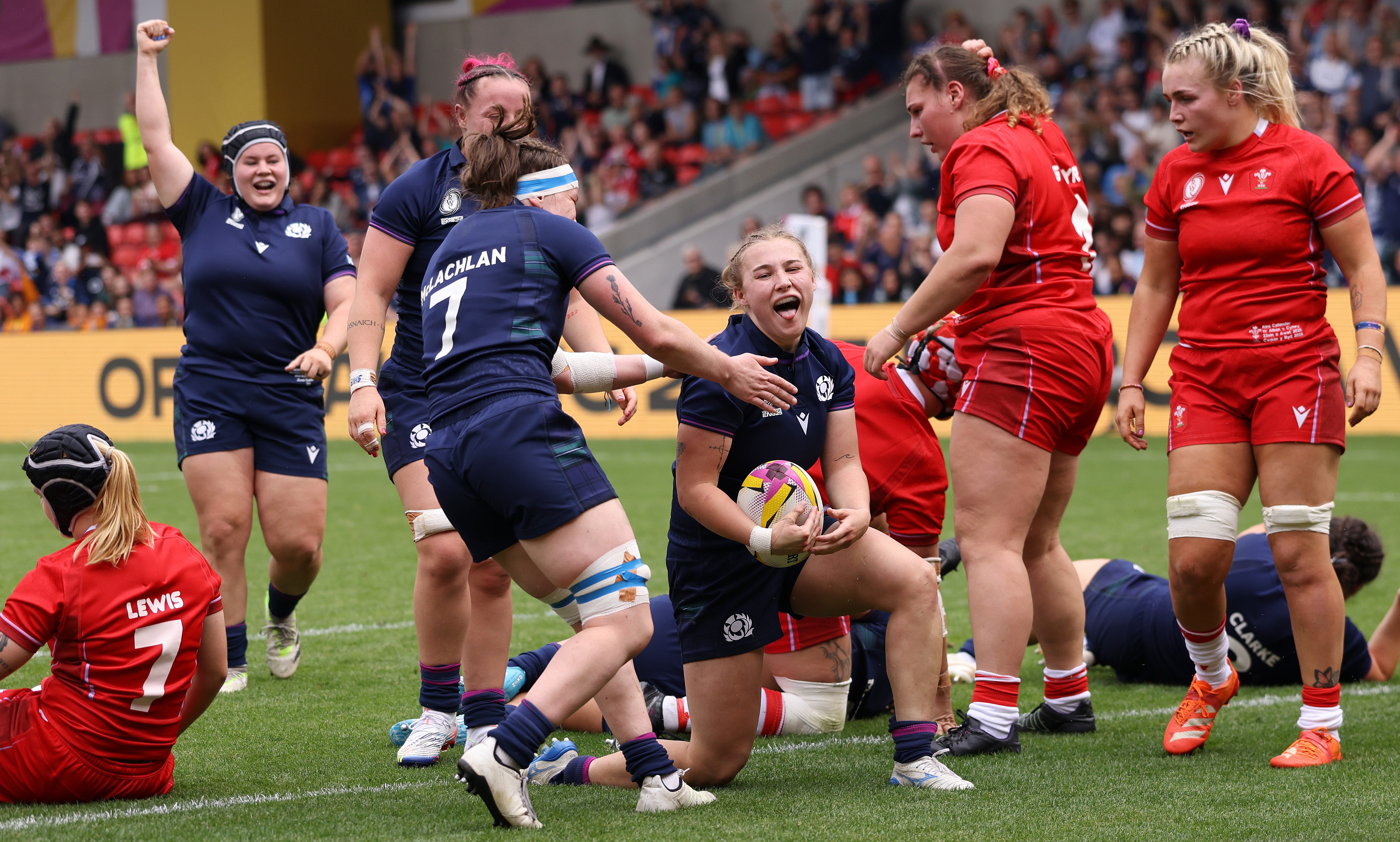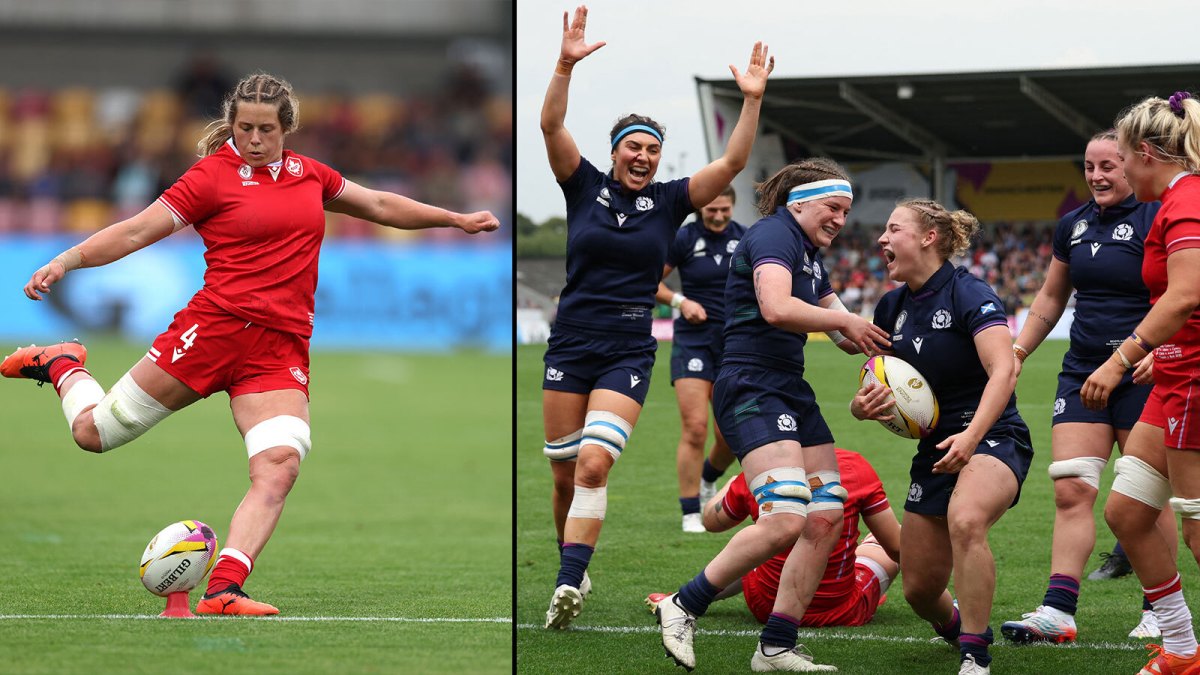The tenth Women’s Rugby World Cup began on Friday night, with a crowd of 42,723 at Sunderland’s Stadium of Light for England’s 69-7 win over USA. Now the first round of fixtures is complete, here are the key talking points.
How competitive is the tournament?
One-sided results were always going to be a feature of this World Cup, and the wait for a one-score game continues. The opener was as expected, as were Australia, Canada and New Zealand’s victories over Samoa, Fiji and Spain. France and Ireland’s respective wins over Italy and Japan were convincing but neither was a blow-out. There are fears for Samoa against England next weekend, and for Brazil against France. We could see three-figure scorelines.
Minnows and stuffings do not invalidate a tournament on sporting grounds. It is a part of all global sporting events. We have seen in cricket, where the past two men’s 50-over World Cups have featured ten teams, how a tournament can feel like a cartel of haves disregarding have-nots.
The women’s game has a long way to go regarding competitiveness, unquestionably. No one is expecting volatility before the knockouts, given the disparity in resources and pedigree. It is nevertheless heart-warming to see Brazil making their World Cup debut — the 66-6 defeat by South Africa was only the 17th Test in their history — and to see Samoan joy even after a 73-0 defeat. Everyone, even Red Roses fans, will cheer if they get on the scoreboard at Franklin’s Gardens on Saturday.
Please enable cookies and other technologies to view this content. You can update your cookies preferences any time using privacy manager.
Enable cookiesAllow cookies once
After the tournament-record crowd on Friday, the weekend’s fixtures gave a sense of appetite for fixtures between neutrals. The official Saturday attendances were 10,054 at Salford and 4,810 at York — even those figures are signs of progress.
Welsh woe in the face of Scottish inspiration
One fixture with 50-50 jeopardy was Scotland versus Wales. Barring an enormous shock in later rounds, the winner would pencil in a quarter-final against England, the loser an early departure.
Scotland won this clash by three points in the Six Nations five months ago. This time they triumphed 38-8. Bryan Easson’s side were ruthless. Wales were toothless. They lack players who can make a game-changing break, busting through or around a defender.

Brebner-Holden celebrates scoring the third of Scotland’s six tries
PAUL HARDING/GETTY IMAGES
It is disappointing that even after a proper build-up under Sean Lynn, Wales were no better than in the Six Nations. “We can’t keep saying how we’re going to be fixing and learning,” the head coach said. “They just bullied us off the park, at the breakdown especially. I just said to the girls we can’t keep saying we’re going to be a hard team to beat, because that isn’t good enough.”
Scotland appeared galvanised by off-field strife, with much of the squad facing the prospect of being left without full-time contracts after the World Cup. Francesca McGhie, set to join Trailfinders, took the plaudits with her hat-trick. “There was energy all the way through to the end of the game,” Easson said. “When we stuck to the plan, I thought we made Wales look pretty ordinary.”
Throwback to forwards who kick
De Goede kicked four conversions and scored a try in a dominant win for Canada
DANNY LAWSON/PA
It was a good weekend for Canadian rugby. The men beat USA to put themselves in a strong position for 2027 World Cup qualification. As the No2-ranked side, the women’s hopes are loftier and Sophie de Goede’s return from an ACL tear is a boon for the tournament — and for those who long to see forwards kicking for goal. Lining up at lock, De Goede kicked four conversions in the 65-7 win over Fiji.
The practice of forwards kicking at goal has died out in the men’s elite game (Barbarians farewells notwithstanding). The amateur era had a rich history of Jean Prat, Tiny Naudé, John Taylor, Peter Brown, Allan Martin, John Eales and more. Kudos to De Goede for continuing to keep the novelty alive.
England’s half-back versatility
A regular theme for the England head coach, John Mitchell, is versatility and the need to deal with “unfairness” during matches. On Friday night, Megan Jones had a huge game at outside centre and saw out the game at fly half, adding to the worst-case options at half-back.
With only two scrum halves in the squad, the Red Roses are relying on Claudia Moloney-MacDonald to cover the position from the wing, and Helena Rowland recently started training in the role as an extra back-up (Rowland already offers services from No10 to No15 at international level).

Jones, left, produced a brilliant performance against the US and opposite number Ilona Maher, right
PAUL HARDING/GETTY IMAGES
Moloney-MacDonald, Rowland and Holly Aitchison, the second-choice fly half, have all been nursing injuries, hence Jones’s mid-game elevation, but Mitchell said the trio could be available against Samoa.
Can France rediscover their mojo with the return of Bourdon Sansus?
“We knew there were big expectations back home, especially with the game live on TF1,” Yllana Brosseau, the France prop, said after the 24-0 win over Italy. “Maybe there was a bit of pressure to show the public what we’re worth and to give a better image than we did in Mont-de-Marsan.”
France are the least impressive member of the big four, and prospective semi-finalists, right now. However, the 40-6 warm-up defeat by England and the stuttering victory in Exeter on Saturday night had one thing in common: the absence of Pauline Bourdon Sansus. The scrum half, the only Frenchwoman in last year’s world team of the year, served a two-match ban for comments about refereeing in club rugby. France will hope that her return to the helm will improve their output.
